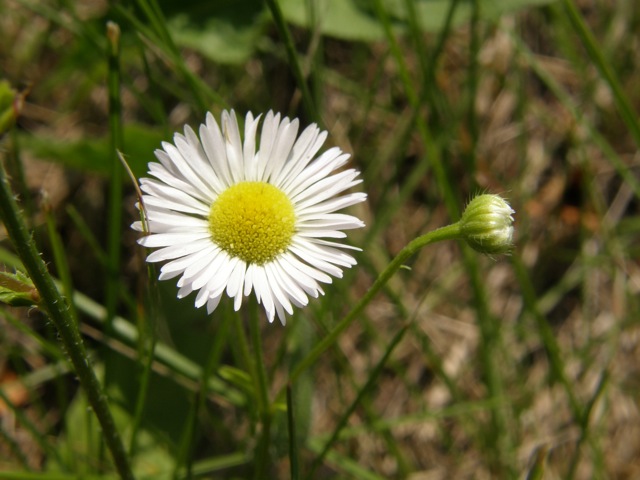Asteraceae, the daisy, sunflower, or composite family.
Description:
Plant:
Often branching, firm stem, with small appressed hairs, and
many long, pointed leaves, bears white,
many-rayed, daisy-like flowers with yellow centers.
Annual, biennial, or short-lived perennial.
Flowers:
White, (occasionally pinkish), daisy-like flowers with yellow center, to 3/4",
borne in small groups or loose clusters. Generally 50-100 rays, that
are shorter than or just barely longer than the diameter of the central
disk. Involucral bracts not overlapping and with distinct hairs.
Leaves:
Alternate, narrowly ovate to lanceolate, with tapered base and sharply pointed
tip, sometimes with widely spaced teeth.
Fruit:
Dry, seedlike.
Blooming:
June-September
Habitat:
Fields, weedy areas, roadsides.
Comments:
One of several fleabanes in our area, this species is also known as
daisy fleabane and rough fleabane. Both names are also used for other
flowers. Fleabanes are typified by many ray petals, and relatively broad
disks. The two most common other fleabanes in our area are Common
Fleabane (E. philadeplhicus) and Annual (also called Daisy) Fleabane
(E. annuus). Common fleabane has many more rays, typically 150-400.
Annual fleabane is similar, distinguished by somewhat more (80-120) rays
that tend to be longer than the disk diameter, and more sharply toothed and
hairier leaves.
The name fleabane refers to an old belief, which does not seem to be true,
that the plants would repel fleas.
Where to find it:
Scattered in weedy, open area in the park.
